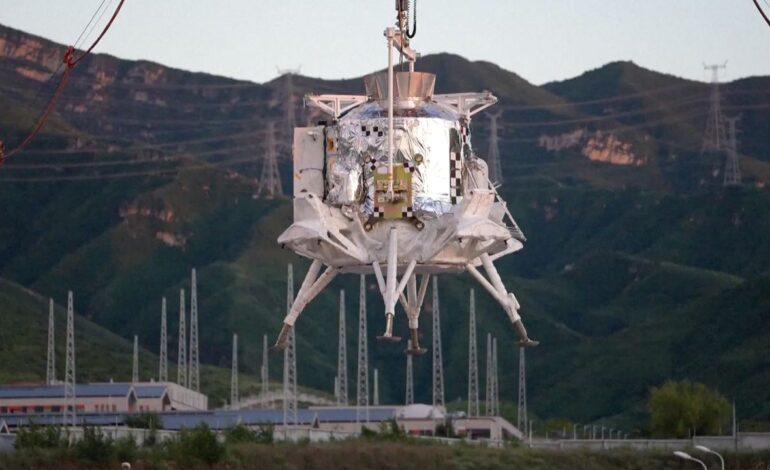China’s Lunar Lander Passes Key Tests Before 2030 Moon Mission

China has made significant progress in its lunar exploration efforts, successfully conducting landing and takeoff verification tests for its crewed lunar lander, known as Lanyue. These tests took place in Huailai County, located in northern China’s Hebei Province, and are essential steps towards the country’s planned moon mission set for before 2030.
The tests, completed on August 6, 2023, represent the first time that China has evaluated the off-Earth landing and takeoff capabilities of a crew-carrying spacecraft. According to the China Manned Space Agency (CMSA), this verification process is crucial for assessing the lander’s performance under various scenarios during both landing and takeoff.
Huang Zhen, an official with the China Aerospace Science and Technology Corporation (CASC), emphasized the importance of testing under realistic conditions. “For instance, during the launch phase, we need to verify its launch payload. We conducted large-scale mechanical tests to ensure a smooth transition in the extremely complex environment during the launch,” he told the state-run broadcaster China Central Television (CCTV).
Key Features and Safety Measures
The Lanyue lander is designed to transport two astronauts to the lunar surface, along with a lunar rover and various scientific payloads. Safety remains the primary concern throughout the development process. Huang noted that the lander has multiple engines configured redundantly to ensure that, in the event of a failure of any single engine, the remaining engines can safely navigate the astronauts back to lunar orbit.
During the recent tests, the lander’s engines were ignited to simulate the conditions of both landing on the moon and taking off again. CCTV reported that the tests successfully validated key systems, including the landing and takeoff system, control plan, lunar contact shutdown procedures, and the compatibility of various subsystems such as guidance, navigation control (GNC), and propulsion.
Design Challenges and Innovations
Achieving optimal landing comfort for astronauts is a priority for the Lanyue development team. Huang explained that the lander is equipped with four landing legs specifically designed for excellent cushioning during landing.
Additionally, the design of the lander presents significant challenges, as it must perform multiple tasks while minimizing weight. “Every bit of weight has to play a role in several functions, so we have to achieve the ultimate in integrated design and lightweight construction,” Huang added. Innovative methods have been employed to reduce weight while maintaining functionality, achieving a complex and sophisticated design with the least possible launch weight.
As China continues to advance its lunar exploration program, these successful tests mark a vital step toward fulfilling its ambitious goal of sending astronauts to the moon by 2030. The progress reflects China’s commitment to expanding its presence in space and contributing to global scientific knowledge.






